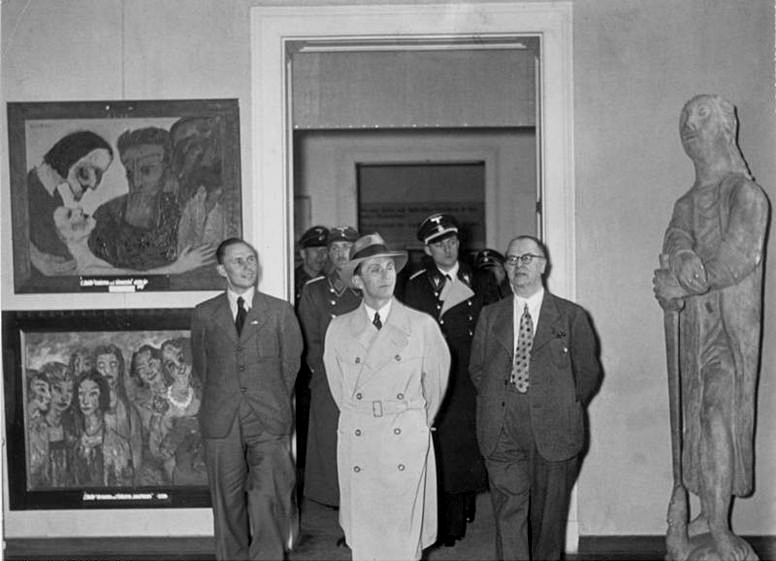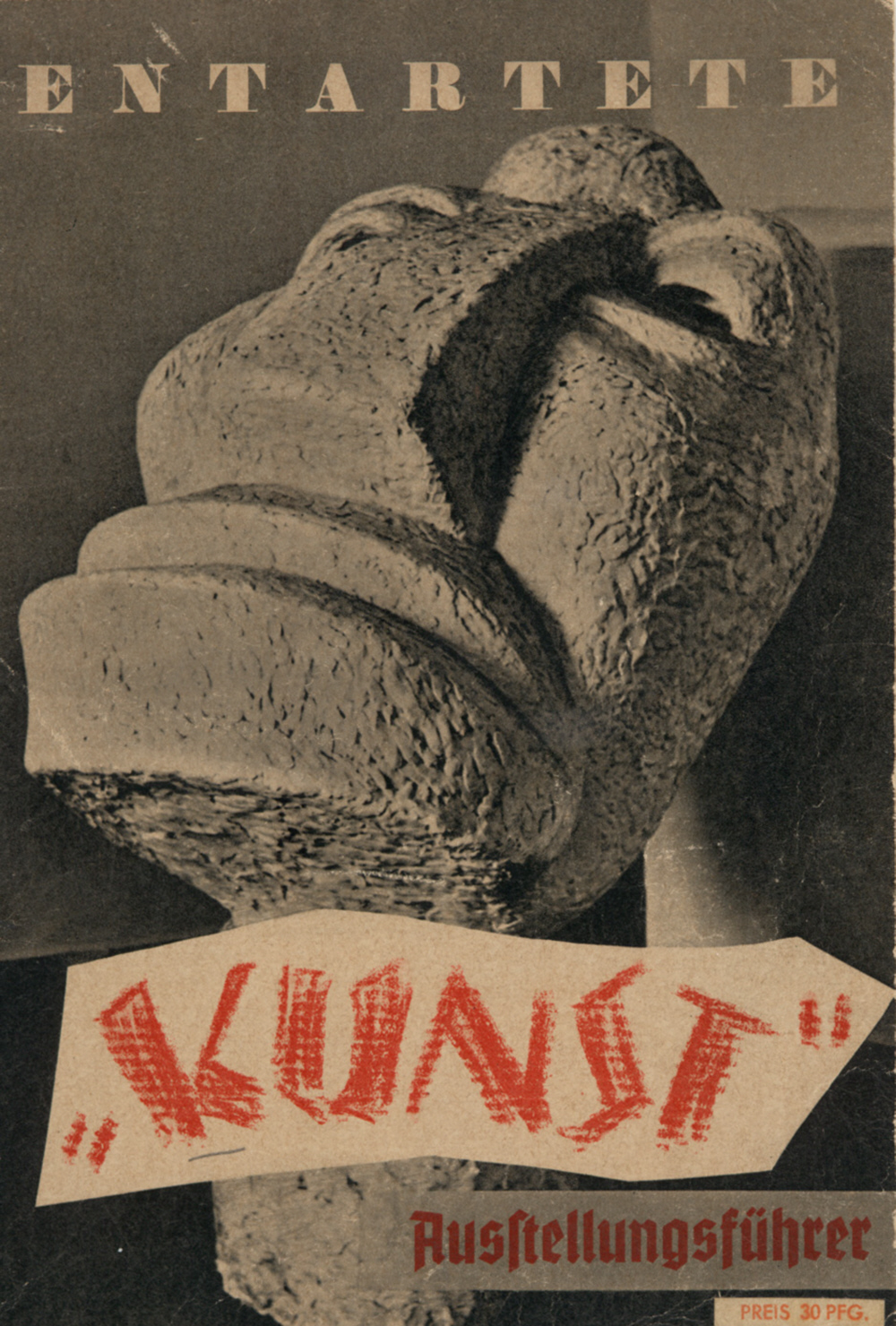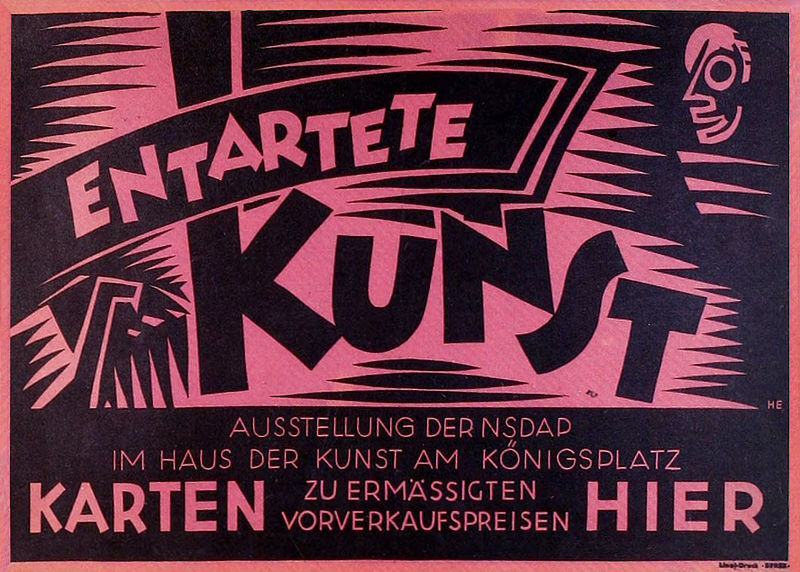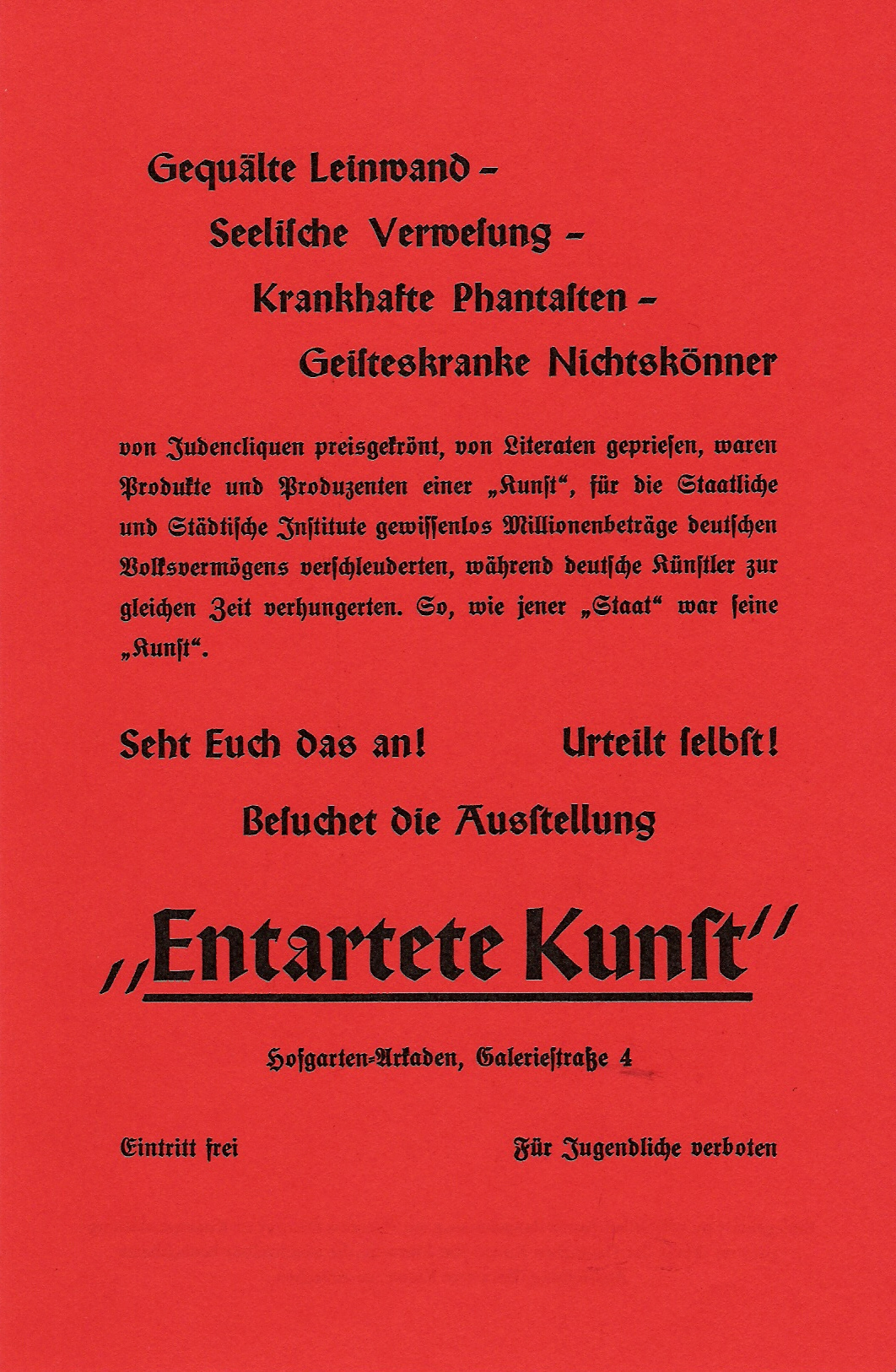
Joseph Goebbels at the 1938 exhibition in Berlin - Source: Wikimedia
Degenerate Art
Munich 1937
The Darkest Moment of Nazi Cultural Propaganda
The exhibition "Degenerate Art", which opened on July 19, 1937, in the arcades of Munich’s Hofgarten, marked both the the moral low point and a turning point in Nazi cultural policy. It was conceived as a denunciation show, intended to publicly shame, defame, and permanently remove modern art of the Weimar Republic—what the regime called “degenerate art”—from the German art world.
The main goal of the exhibition was to manipulate the public in line with Nazi ideology. The regime portrayed works by artists such as Max Beckmann, Ernst Ludwig Kirchner, Oskar Kokoschka, Emil Nolde, Marc Chagall, and Pablo Picasso as “un-German”, “Jewish Bolshevik” and “degenerate.” The presentation was deliberately chaotic and intimidating: paintings were hung close together and at odd angles, often without frames, accompanied by mocking captions and price tags that denounced the alleged “costs” to the German people.
The propagandistic effect was heightened by a direct comparison: only a few meters away, in the newly opened “House of German Art,” the regime simultaneously presented the “Great German Art Exhibition.” There, art defined as “healthy” and “German” was showcased—naturalistic, heroic depictions of farmers, soldiers, and idealized landscapes—promoted as the only true artistic ideal.
The “Degenerate Art” exhibition was an enormous success in terms of Nazi propaganda, attracting more than three million visitors in Munich. It later toured major cities such as Berlin, Leipzig, Salzburg, and Vienna. The show served as a pretext for a nationwide confiscation campaign during which more than 20,000 works were removed from over 100 German museums. Many of these artworks were subsequently sold on the international art market or destroyed.
The exhibition marked the end of artistic modernism in Germany. Artists whose works were labeled “degenerate” were banned from practicing their profession; many were forced into exile or became victims of persecution. Thus, the “Degenerate Art” exhibition was not merely an art show, but a central act of cultural cleansing—and a tragic chapter in the history of censorship in Germany.
Below is the almost complete exhibition guide published in the summer of 1937, shortly before the opening of the traveling exhibition “Degenerate Art” in Munich. Although 4 of the 32 pages are missing, this important historical document vividly demonstrates the insidious ways Nazi propaganda attacked the artists of modernism, while also revealing the ideological aims of the regime’s cultural policy. The four missing pages depict works by defamed artists — meaning the full text of the exhibition guide is entirely preserved in the PDF:
This digital version is based on publicly available scans from the National Library of Israel (Wikimedia Commons, CC BY-SA 4.0) and has been supplemented with missing page references. It is intended solely for historical and academic engagement with the 1937 propaganda exhibition.
Exhibition Guide “Degenerate Art” (1937)
Digitized version of the 1937 original
Source: National Library of Israel / Wikimedia Commons
License: CC BY-SA 4.0



